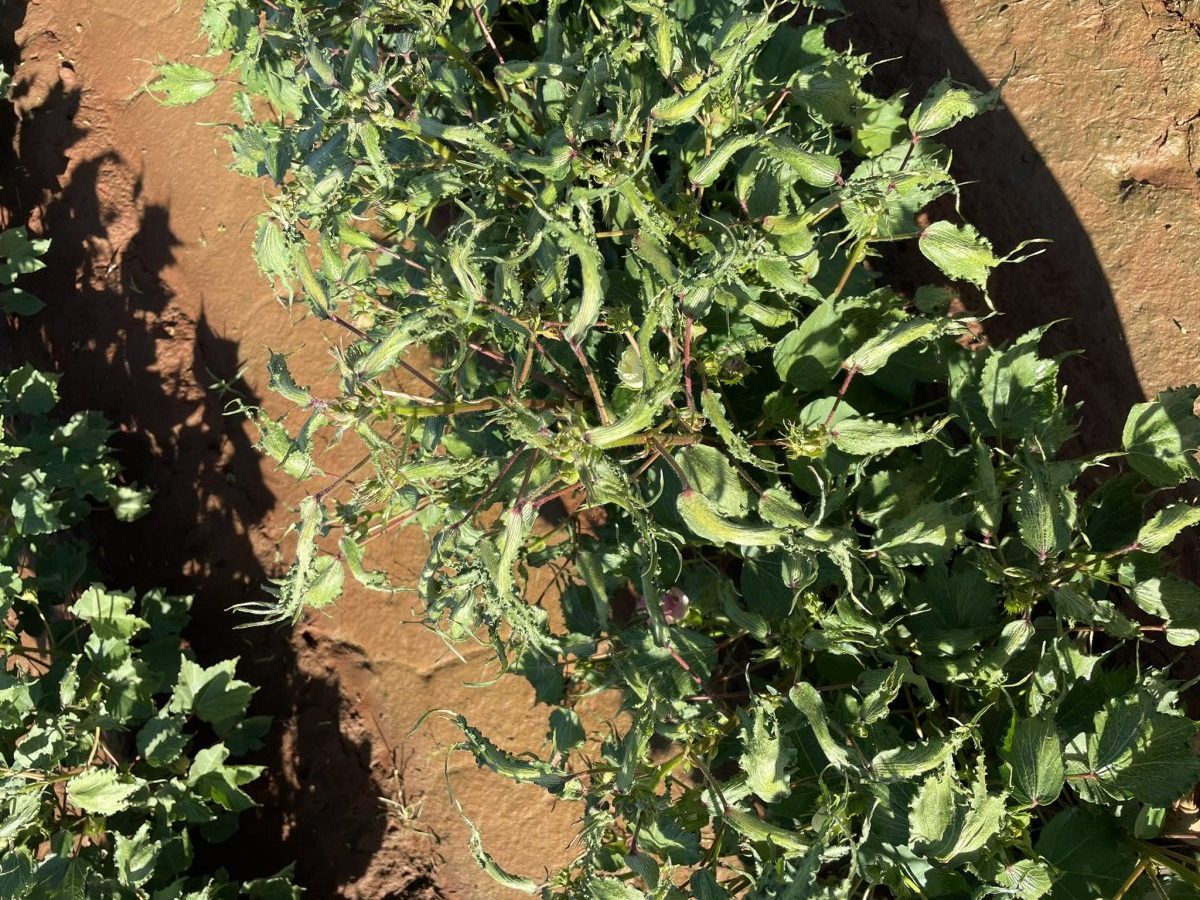
Spray drift appears to be impacting an increased number of cotton and other crops this season. Photo: Emma Ayliffe, Summit Ag
TWO of Australia’s peak agricultural bodies have approached government regulators and enforcement agencies about the potential for tougher laws and expanded enforcement activity amid an increase in the number of spray drift incidents, estimated to have caused millions of dollars in damage.
Farmers have voiced their concerns following a number of moderate to severe spray-drift incidents.
These have occurred on the Darling Downs, St George, and Dirranbandi districts in Queensland, in the Mungindi district on the Queensland-New South Wales border, and in the Gwydir, Lower Namoi, Walgett and Macquarie Valley regions of NSW.
Cotton Australia (CA) general manager Michael Murray said cotton crops had been impacted but so too have other crops, and it was unclear in each location which chemicals were responsible.
“Media reports have suggested 2,4-D spray drift is responsible in some locations and while the damage is consistent with phenoxy herbicides, there is currently no definitive scientific evidence in the form of residues analysis to confirm that,” Mr Murray said.
“There is no doubt the situation has been exacerbated because of the seasonal conditions which have generally been conducive for weed growth, and the weather-induced delays to winter harvest means that in some instances weed control is occurring later than usual.”
Potential for greater damage exists if spraying occurs under “‘hazardous inversion” conditions, most commonly occurring at night, when cold air is trapped near the ground and spray droplets can remain suspended in the air for hours and can travel many kilometres beyond the intended target.
Mr Murray said the level of damage may indicate some people are not applying in accordance with approved label instructions, or that the label instructions for some products may need review.
Action against offenders needed
Grain Producers Australia (GPA) southern director and Wimmera grower Andrew Weidemann said GPA supported an approach that recognised those growers who are doing the right thing, and identified and addressed behaviours that put other growers at risk through increased compliance activities.
“If 99.9 per cent of growers are applying chemicals in their production systems the right way, we don’t believe the 0.1pc should be the standard by which our industry is judged, but we all know that’s the way it works, whether we like it or not,” Mr Weidemann said.
“However, in order to maintain public trust and confidence in the use of these pesticides that help ensure we can produce food that’s affordable and environmentally sustainable, we need a strong and effective regulatory system that can act to weed out offenders with precise action.
“We all need to be proactive with managing these issues because we don’t want it to reach the stage where access to these pesticides is shut down for the majority of good operators due to the poor practices of a few.
“We encourage all growers to reach out to GPA and share their concerns and put forward ideas on how we can work together and strengthen our approach, to solve these common problems.”
Mr Weidemann is also the independent chair of the National Working Party on Pesticide Application (NWPPA).
It was established in 2010 to conduct targeted research relating to spray drift and inform the spray drift management policy of the Australian Government registration authority and supply regulator of agricultural chemical products, the Australian Pesticides and Veterinary Medicines Authority (APVMA).
The APVMA has undertaken significant work over the past decade to strengthen label instructions, restraints and warnings to reduce the risk of undesirable chemical spray drift, which has resulted in best practice improvements and introduction of new technologies.
Updating label instructions is an ongoing process and, while a major update of label instructions for 2,4-D products was completed in recent years, strengthening of label instructions for other phenoxy herbicides may be needed.
The APVMA employs a weight-of-evidence, risk-based model to regulate pesticides.
The APVMA only registers chemical products where identified risks can be mitigated through specific application and safety instructions on the product label.
It is the role of state and territory government agencies to then ensure that registered products are only used in accordance with the approved label instructions.
Better understanding required
NSW EPA executive director of regulatory practice Tony Williams said the regulator is concerned by recent reports of chemical spray drift and will roll out compliance and education activities in affected areas.
“The EPA is working with NSW growers, crop sprayers, the Department of Primary Industries and other regulatory bodies to ensure everyone understands their obligations when spraying herbicides and pesticides,” Mr Williams said.
“It’s critical that appropriate training, storage and record keeping is completed to minimise risks to crops and communities.
“We understand farmers have been doing it tough lately, so we’re asking everyone to work together to protect their neighbours and the environment from spray drift.”
Queensland Department of Agriculture and Fisheries general manager plant biosecurity and product integrity Mike Ashton said it was essential that users of agricultural chemicals read and follow the APVMA approved instructions for each product.
“If you are unsure about any requirements, ask your chemical reseller or agronomist for advice before you use the product.”
Source: Cotton Australia, Grain Producers Australia

HAVE YOUR SAY